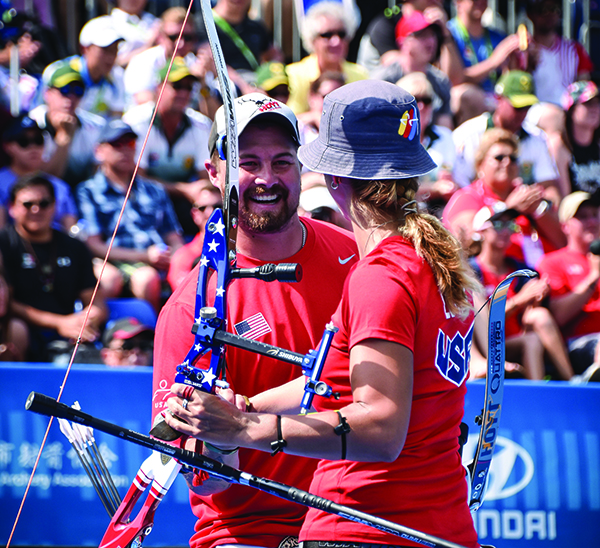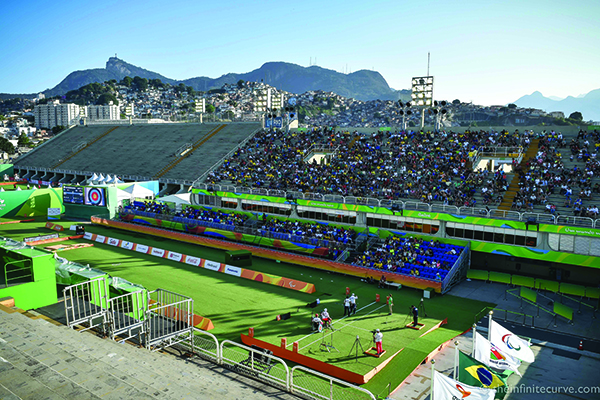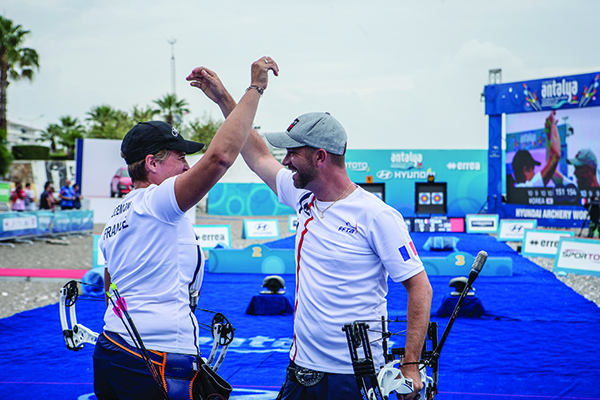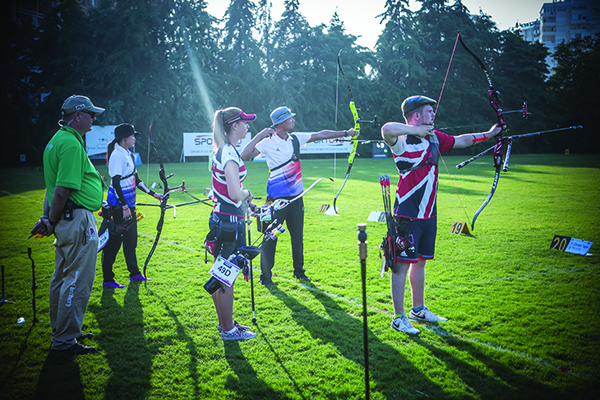Occasionally here at Bow International, we like to do a bit of blue sky thinking about the future of the sport…

Scream if you wanna go faster: Bow International have been doing some thinking, and have come up with an idea or two that might just attract a wider audience
There has been speculation for many years about how archery could develop new formats, usually with the goal of making it more appealing to a wider audience. Indeed, a recent communication from the Archery GB asked members about whether they would like to see new formats to the sport, “like 2020 in cricket.”
A year or two ago, World Archery secretary-general Tom Dielen, in an article about whether compound could become an Olympic sport, said “We need to develop archery’s version of beach volleyball. It doesn’t need to be on a beach – but we do need to make it different enough from recurve archery to enhance the appeal.”
Both beach volleyball and Twenty20 share something in common: they are different formats of older, long-established sports designed specifically to appeal to a new audience, and if you’ve been reading this column in 2018, you’ll know all too well that what drives all sport these days is TV exposure.
Faster and Faster
Sport climbing is one of the new sports introduced to the Tokyo Olympics. While indoor climbing is now popular as a sport around the world, it is incredibly easy to see the appeal to a global TV audience. You only have to watch one of the speed-climbing matches to instantly see the appeal to a casual viewer; a lightning quick, incredibly athletic bout that’s over in a thrilling flash – with a hint of danger about it (have a watch on YouTube).
There’s something about it that has instant appeal, plus the flash format lends itself beautifully to highlights packages.
The other sports added to the Tokyo programme include karate, skateboarding and surfing; you can argue for as long as you like as to whether they deserve to be included as shining examples of Olympism or not, but all of them fit a key criteria for inclusion – they all work on TV.

The audience for the Paralympics at Rio 2016
There have been great strides made towards packaging target archery for a TV audience, but despite the excellent TV ratings every four years, it remains a ‘niche product’ in the pantheon.
So, Bow International presents its idea for changing international target archery for the audience-grabbing better, and it’s this…
Make the mixed team events eight seconds an arrow, rather than twenty!
OK, hear me out. If you shoot recurve or compound competitively, and I know that a large proportion of you do, you will know the difficulties of getting an arrow away cleanly and precisely aimed in the regulation twenty seconds (or multiples thereof).
Getting it away in just eight seconds would require an instinctive attention to shot cycle and a total commitment to execution from the second you raise the bow. But from an audience perspective, it turns a head-to-head contest into a speed shooting round.
Let’s look at six reasons why this might be a good idea.
It makes the mixed team event something new, exciting and special
While lauded as a general sports format by the IOC, so far, there’s only been a handful of mixed team archery matches that have set the place alight. It’s pacier to watch than the team rounds, but doesn’t have the dynamic of the regular three-member team rounds with the anchor positions and the vital communication.
Essentially, it’s not different enough and occupies a curious and occasionally awkward space between the team and individual competitions. With the best will in the world, amongst elite athletes it’s still not always taken quite as seriously as the regular team competition, although the inclusion of it as an Olympic medal sport is gradually changing that dynamic in recurve, if nowhere else in the sport.

Sophie Dodemont and PJ Deloche celebrate mixed team victory
It adds strategy and athleticism
Each pair would have to move quickly to get the job done, there would be special technique to practice – possibly even special equipment. All of this would add intrigue and entertainment, and would belie the widely held opinion that “you don’t have to be fit to do archery.”
It would become a real team sport
I’ve heard mixed pairs at World Cup finals talk about how they never practice together, because essentially, they are shooting individually. The speed at which archers would need to swap places on the line would require dedication both to the round and to the team. The jeopardy added with the ticking clock would require archers to place even more trust in one another to get the job done.
It opens up opportunities for specialists
The mixed team event already opens the door at the Olympics for countries who didn’t qualify a full team to take a medal. Perhaps speed specialists would develop within individual countries’ squads.
It keeps bums on seats
If the last event at every major meet was the high-speed round, it would keep a live audience waiting and excited until the end.
It panders to audience expectations
This point is perhaps the most controversial. Like it or not (and I’m aware it’s mostly not) the general audience often expects to see something they’ve seen in the movies. They’re expecting pyrotechnics, moving targets and ludicrous ‘Hollywood’ archery.
I can also hear the scoffing of trad shooters reading this, thinking ‘Eight seconds an arrow? What? That’s easy!’. And of course, they’d be right. Getting sighted recurve and compound archers onboard would be much more difficult. When I proposed this idea to a handful of elite archers, whose blushes I shall spare, reactions ranged from “really difficult, but possible. But fun? Maybe.” to “You’d have to practice doing it even quicker.” to “You utter ******. It’s hard enough as it is.”

Imagine this, just sped up a lot more!
You may think that archery is archery and this kind of pandering to the non-archery audience is ridiculous, and that’s a very reasonable viewpoint to take. But archery has constantly developed new formats and rounds, indoor and out, over its competitive history, and it will continue to do so in the future.
New formats for TV? What about field?
Field archery, with its extra strategic elements, multiple angles, and target variety, could make for interesting TV viewing for the casual armchair sports fan. The finals of the World Field Championships in Cortina, with the dramatic final shot right up the Olympic ski slope, was likely the most interesting broadcast of the sport yet made.
Getting usable TV footage of field archery’s usual home – deep inside hilly woodland – is much more difficult, and the handful of televised 3D tournaments have ended up looking a little murky and flat when watched on the box – so far, anyway.
A hybrid of field archery and golf, shot on golf courses, might be a way forward for the sport. ‘Archery golf’ has been around for a while; but follows the latter sport more closely. Essentially, it would involve shooting from mark to mark, a sport that was widely practised in mediaeval England, and requires all-round skill with a bow.
Indeed, ‘roving marks’ archery has often been cited as a direct antecedent of golf. If the safety concerns could be allayed and the TV coverage was as spectacular as the Masters at Augusta – would you watch it?
So while this may be just blue sky thinking, I hope it’s giving you some ideas about how the sport could continue to develop. Have you got a much better new format idea for archery?
Send it in to the editor at [email protected] – and let’s see how we can take archery forward.


A better idea would be to make it a race to 3 arrows on the 10-ring (or 2, or 4, for pairs). You can shoot as many arrows as you like, and take as long as you like, but what wins is getting the 3 10s faster than the other team or competitor. If you don’t shoot 10s, you lose time…if you do shoot 10s, but take a long time in each shot, the other may win.
This can be adjusted, at various levels of shooting, by changing the accepted score (8s for club events, 9s for Nationals or Juniors, or whatever…it is adjustable).
And would be TV-friendly, and easy to understand. Racing archery…the beach volleybal of WA.